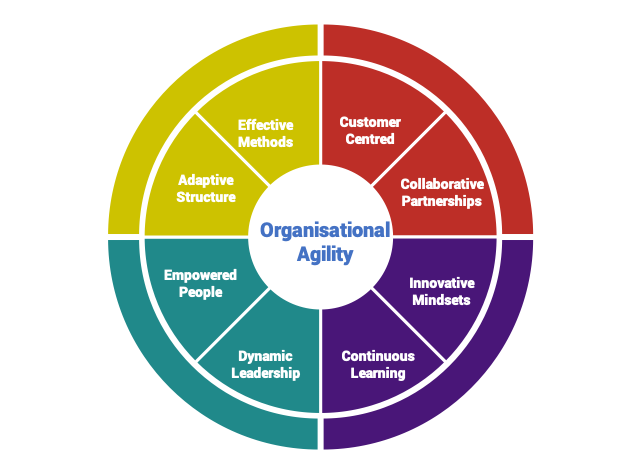An agile organization is a term applied to a company which is quick to respond to changes in the marketplace or environment. It is hugely focused on customer needs which call for customizations, rather than standardized offerings.(TalentLyft.com, 2022).
According to Scrum.org, such organizations use concepts and tools for measuring and enabling business agility through Evidence-Based Management (EBM), and daily visualized stand-up meetings known as Scrums, that focus on short iterative, quick delivery projects (Sebestyen and
Sebestyn, 2020). Agile organizations have the following features:
● Adaptability to incorporate in Corporate culture.
● Examining the importance of organizational design and culture, including human factors, processes, and structures in the organisation that can promote or inhibit agility with Scrum.
● Having access to information for easy decision-making.
● Focus on delivery and a common vision.
● Multi-learning.
● Social change.
● Strategic thinking.
● Technological aspects like Internet of Things (IoT) and machine learning.
● World-wide economic and technological advancements. (Mckinsey, 2008; Deloitte, 2018).
The agile approach to software development is being touted as an approach to structuring and operating in organizations (Williams, 2015). Agile organizations include those in the banking, media, retail, software, and technology industries.
A case study of an agile organization is how in 2020, the American-based bank BBVA Compass, used the agile process to develop 60 percent of its software using the methodology. According to Simplilearn.com, agile methodology at the bank has already cut development time from two
years to six months or less. In Kenya, Equity Bank’s as Equity Online app launched in October 2021 the country’s first mobile virtual network operator (MVNO), Equitel, and Equity Bank’s mobile banking app, which as of 2018, accounts for 77 percent of the banking group’s transactions. The app also accounted for 89 percent of all loans that had been processed successfully which originated via mobile channels in 2018. Furthermore in February 15, 2022, Stanchart bank also launched the SC shillings fund, a money market mobile app fund that allows users to save from as low as Sh1,000, earn competitive returns and withdraw anytime (CapitalFM, 2022).
The flip side is that organizational agility has created a challenge for more conservative institutions to catch up. These include those organizations in the private, public and social institutions. Amongst these are those found in the energy and pharmaceutical industry. Agility is a contrast to the stability that is characterized by traditional bureaucratic organizations, the latter which are more stable. Such companies are interested in maximizing the interest of shareholders.
According to Study.com (2022) agile organizations came into being in the late 1990’s and early 2001 in the U.S.A. This was reinforced by the need of a faster development process, as well as taking a creative mind-set, multi-disciplinary transformational approach, that was focused on customer-orientation and goal-orientation. Agile organizations also have smaller teams, that are
more people-centered, and tend to make decisions at a faster pace. They, therefore, address the deficits of rigid, plan-driven practices of traditional organizations (Moran, 2015).
Agile organizations also emerged from the need to counter the unproductiveness of traditional bureaucratic organizations during trying times (McKinsey and Company, 2017). The following are the characteristics of agile organizations versus the characteristics of traditional ones:
● A traditional organization has a hierarchical structure with a top-down structure while an agile one has a clear, flat structure.
● Such organizations have a powerful governance entity at the top, while agile organizations have hands-on governance.
● Traditional organizations have a strong skeletal structure that is rigid and slow moving. On the other hand, agile organizations have action-oriented decision-making.
● Traditional organizations have continuous programming and control. Agile organizations are, however, focused on rapid monotony and experimentation.
● Traditional organizations require multiple sign-offs and status decision-making processes during crises. Conversely, employees of agile organizations are empowered to make crucial decisions that are within their jurisdictions, teams and roles during crises.
● Traditional bureaucratic organizations focus on the value that they add to shareholders. On the other hand, agile organizations have an entrepreneurial drive, role mobility and next generation technology (PricewaterhouseCoopers, 2020; McKinsey, 2018)
What are high level steps to implement the agile solutions? Meyer (2015) states provided a synopsis of how a team of young developers, living in a
repurposed McMansion in Maryland, U.S. A. helped rebuild Healthcare.gov website after the initial failed launch of the system. The website and the applications behind it were so badly developed that it nearly broke the Affordable Care Act. The U.S. government spent millions on paying project managers and IT development houses to create the system. It performed so badly that on Healthcare.gov’s first day, only six people successfully used it to sign up for health insurance. An Agile approach by a small team of young people successfully re-developed the application using open-source software and cloud services. Known as Tech Surge, the group of developers from Silicon Valley in California, created a better working website from disorganized contractors and bureaucratic mismanagement (The Atlantic, 2015).
Kenyan case studies include Equity Bank’s Equity Online, a digital platform that was launched in October 2021 to allow customers to have access to a unified financial services service offering across channels, with simpler customer journeys, fresh and user-friendly interface. Also in February 15, 2022, Stanchart Bank Kenya launched the Standard Chartered (SC) shillings mobile app fund, which allows users to save from as low as Sh1,000, earn competitive returns and withdraw whether on a weekly or monthly basis. It can also allow for financial inclusion (Capital FM, 2022).
How prepared is your organization for an Agile Transformation?
The call to action (CTA) for traditional organizations to become more agile is to assess the capability in terms of the following questions:
● Do you know the extent to which your market environment requires your organization to become so?
● How traditional or agile is your organization? To what extent do you see the five agility trademarks (that is, strategy, structure, process, people and technology ) across all, or, parts of your organization?
● How ready are your leaders to lead an agile transformation? Is leadership in your organization about planning, directing, and controlling?
● Or, is it about the leader as a visionary, architect, coach, and catalyst?
● Which of the three new sets of capabilities are most important for you to learn: agile mind-sets and behaviors, agile ways of working, or agile organizational design and culture?

